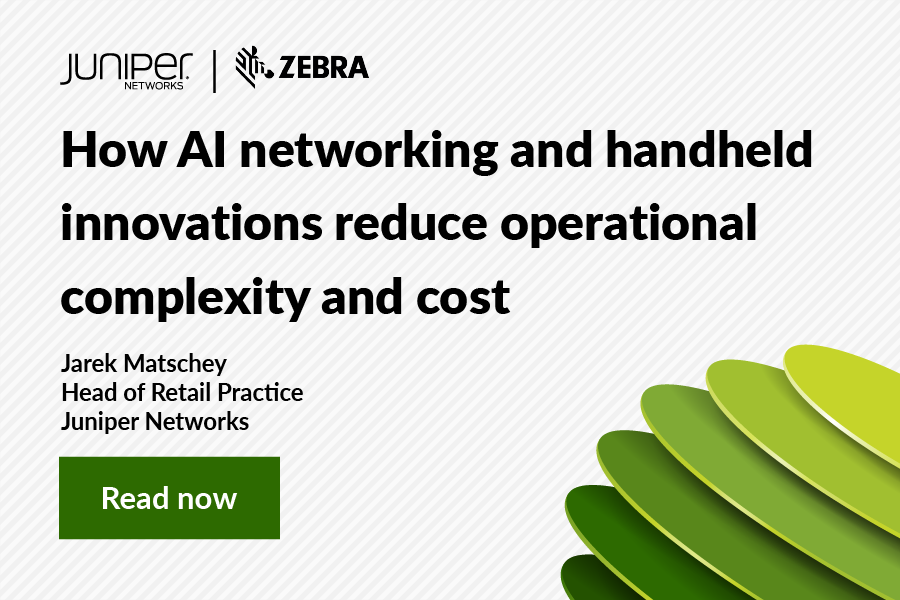Reducing Operating Costs, Enhancing Engagement and Optimizing Services
To effect meaningful change, whether that’s becoming completely carbon neutral or delivering a new program for student wellbeing, higher education strategy needs to be informed by data. The ability to gather accurate real-time data across the campus is extremely valuable and this is where Juniper’s focus on experience-first networking can offer unique benefits for colleges and universities.
In addition to gathering performance data to optimize and assure user, device and application experiences, the Juniper AI-driven network gathers location-based data that can be used to deliver provide relevant, localized services beyond the network. Such services can significantly enhance student, staff and visitor experiences, as well as create efficiencies that reduce campus operating costs.
Juniper Networks’ Indoor Location Services are built into Juniper Access Points, so data can be gathered from everywhere the network covers across the entire campus – indoors and outside.
Previous blogs have looked at the application of Juniper Location Services for higher education and how the network can benefit a university’s engagement, safety, wellbeing and commercial strategies. For example, an environmental strategy that aims to reduce the institution’s carbon footprint is likely to be driven by a reduction in energy and water consumption (the single biggest cost to a university beyond staffing and premises) and more efficient use of utilities in future. When the facilities management team can access data from the network that shows which buildings are being used when – and by how many people – they can direct users to facilities in a way that optimizes use of space and resources. This could mean using the university app to reach out to students and steer them to another study spot, so that only one building needs to be fully heated versus several. In this way, students can still enjoy the space they need to study while energy is used more efficiently across campus.
Location data obtained through the campus network can also be used to:
- Manage people traffic, reduce congestion at busy times and manage occupancy limitations for safe social distancing within lecture theaters, libraries, cafés and other communal areas.
- Analyze student trajectory to identify any individuals who appear to be at risk of falling behind, so that interventions and remediation can be provided if needed.
- Provide turn-by-turn navigation, deliver localized information to enrich visitor experiences and support a range of safety and security measures.
Juniper vBLE Delivers Unique Capability
Virtualized Bluetooth® Low Energy (vBLE) is a patented Juniper innovation. It’s built into Juniper Access Points to create a flexible, virtual Bluetooth network overlay that obtains meaningful and accurate data from within 1-3 meters, a significant enhancement to the ‘blunt instrument’ range of up to 10 meters for traditional wireless.
Each access point (AP) is equipped with an array of 16 transmitters: eight to receive and eight to send data. These can individually be set to different strengths, so any Bluetooth-enabled device can be reached by up to eight different chirps, each for a specific limited location. As positional data is accurate to within 1-3 meters, the network can be used to deliver highly localized information to engage and help users.
For example, in a museum, a single access point could be used to enrich visitor experiences for multiple key exhibits. If an individual is looking at a dinosaur skeleton, the network will identify what has caught their attention and then deliver relevant and engaging content about that dinosaur via the museum app, from simple text to virtual reality.
For universities and colleges, this offers multiple benefits, for example:
- When small groups of chemistry students are rotating between six different experiment set-ups, each group can receive the relevant instructions and guidance on their smartphone, based on where they are standing or sitting. As they move on to the next workstation (which could be in the same lab, or a different building), the network will provide them with the information they need for the next experiment.
- When works are being undertaken, localized health and safety notices can be delivered to visitors when they arrive at the affected area, alerting them to what’s happening, informing them of any changes to access and asking to accept updated terms and conditions to cover liability.
- Anyone handling hazardous materials can be provided with relevant safety instructions when removing items from storage, as well as checking their authorization to do so.
Simple to Install; Cost-Effective and Convenient to Operate
Juniper Access Points are quick and easy to set up and can start delivering valuable data within seconds. Once it’s out of the box and plugged into the Ethernet, an AP can be set up by scanning its QR code and using the app – no manual calibration is needed. Within a few seconds, the AP will be live and gathering data.
This, in itself, is a significant benefit: the IT team at Dartmouth University leveraged this simplicity by asking students to help with installation, saving them thousands of hours of specialist time.
vBLE is efficient, practical and cost-efficient. One AP does the work of eight traditional Bluetooth beacons, and an unlimited number can be deployed without cumbersome battery management or the risk of them being moved, whether accidentally or deliberately.
Juniper’s patented vBLE technology is also available via the BT11 antenna, which can be plugged into any IoT port on an access point from other vendors.
Handling Data for Intelligent Use
Once location services are up and running, Juniper’s open architecture enables use of the software development kit (SDK) and open APIs to connect third-party platforms to the network (such as for timetabling or eLearning), so that the relevant data can be extracted and shared for analysis and insight.
Because the network can gather information in real time from anywhere with wireless access on the campus – indoors and outside – university teams can be confident that whatever the data is being used to inform, it will be accurate, recent and relevant.
Experience-First Networking for Higher Education
Juniper AI-driven networks deliver significant value for leading universities and colleges around the world, powering, enhancing and enriching the individual and collective experiences of students, educators and researchers in ways that can help them to achieve greater success.
Find out more about Juniper’s unique Location Based Services
Create a Safe and Secure Environment on Campus with AI-Driven Networking


